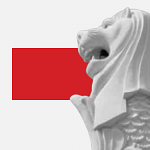Singapore core inflation stays negative for fourth month in May at -0.2%

KEY consumer prices in Singapore continued to fall year on year in May, as core inflation stayed negative for the fourth straight month, according to data released on Tuesday.
Core inflation, a central bank indicator that strips out accommodation and private road transport prices, inched up to -0.2 per cent, from -0.3 per cent in the month before.
The rise came on smaller declines in services and electricity costs and a faster increase in food prices, and beat the -0.3 per cent change predicted by analysts in a Bloomberg poll.
Meanwhile, headline or all-items inflation fell to ‐0.8 per cent in May, from ‐0.7 per cent in April, on a bigger drop in private transport costs.
Businesses deemed non-essential were shuttered in April and May, during a two-month quasi-lockdown imposed to control the spread of the novel coronavirus.
Food was the only component to post a faster rise in prices in May, with inflation edging up to 2.2 per cent from 2.1 per cent in April. The costs of non‐cooked food items such as meat, confectionery, oils and fats, and non-alcoholic drinks all saw faster increases.
A NEWSLETTER FOR YOU

SGSME
Get updates on Singapore's SME community, along with profiles, news and tips.
The data was also buoyed by a slower decrease in the cost of services, from 1.1 per cent in April to 0.8 per cent in May, on smaller declines in holiday and airfare expenses.
Although the prices of these services were not available because of the coronavirus outbreak, the changes in cost were calculated using the overall inflation trend.
"Domestically, subdued economic sentiment and weak labour market conditions will dampen consumer demand, thereby capping price increases for discretionary goods and services," said the Monetary Authority of Singapore (MAS) and the Ministry of Trade and Industry (MTI).
While they warned that coronavirus pandemic-related supply chain disruptions "could continue to put some upward pressure on imported food prices", the MAS and MTI added: "Cost pressures are likely to remain low as some degree of spare capacity in the economy emerges."
Singapore's overall unemployment rate edged up to 2.4 per cent in the first three months of the year, from 2.3 per cent as at end-2019, recent Manpower Ministry data showed. Citizen unemployment rose from 3.3 to 3.5 per cent in the same period.
Said Barclays Bank economist Brian Tan: "With labour market conditions deteriorating in Q1 and likely to weaken further in Q2, demand-pull inflation pressures should remain soft through the rest of this year."
Singapore's Department of Statistics noted that the spread of the novel coronavirus, and the measures taken to curb it, saw certain selected goods and services taken off the market, which affected the collection and compilation of inflation data.
Missing price observations were thus replaced with quotations from other similar sources where possible, among other adjustments that had to be made.
That's even as retail inflation dropped from -1.6 per cent in April to -2.3 per cent in May, on declining prices for items such as clothing and shoes, medical products, household goods, and personal care products.
The decline in electricity and gas costs eased from -5.2 per cent in April to -4.6 per cent in May, on slower take-up of liberalised plans under the Open Electricity Market regime.
Private transport costs fell by 6.8 per cent in May, against a drop of 5.5 per cent in April, on a larger fall in car and petrol prices and continued suspension of Electronic Road Pricing fees.
Housing costs rose by 0.5 per cent, flat on April, on a steady increase in rents.
The official full-year forecast for both MAS core and all-items inflation was kept steady, at between ‐1 per cent and zero for 2020.
JPMorgan analyst Ong Sin Beng said that domestic activity and commodity prices are expected to remain lacklustre, although core inflation could stabilise "in a modest turn during H2 2020 that mirrors the anticipated path of the economic cycle".
The MAS recently tweaked both the slope and mid-point of the Singapore dollar policy band in April, as it pulled back on the currency's rate of appreciation.
While private-sector watchers still believe that the MAS will stand pat on monetary policy at its next meeting in October, Mr Tan added that there is a relatively high risk of the Singdollar policy band being recentred downward then, "especially if the government's 'circuit-breaker' measures impair the economy's ability to recover in H2".
KEYWORDS IN THIS ARTICLE
BT is now on Telegram!
For daily updates on weekdays and specially selected content for the weekend. Subscribe to t.me/BizTimes
Economy & Policy
Global wave of consultancy layoffs has not hit Singapore
Daily Debrief: What Happened Today (Apr 19)
An economy transformed: Lee Hsien Loong’s 20 years as Singapore’s Prime Minister
Daily Debrief: What Happened Today (Apr 18)
Singapore’s first RoboCluster launched for facilities management, to turn R&D into market solutions
Daily Debrief: What Happened Today (Apr 17)
